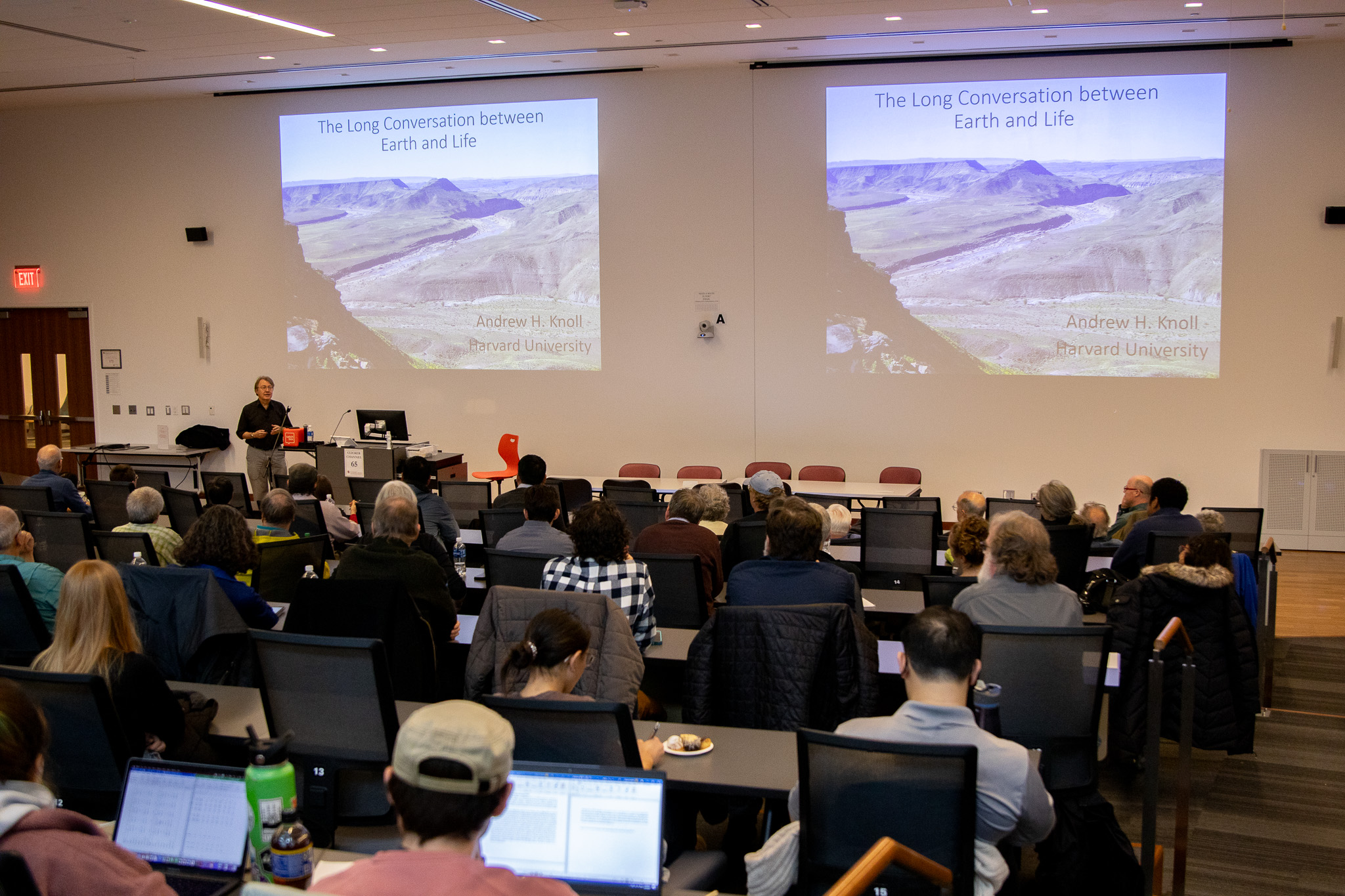By Drew Durst
For The Diamondback
Harvard University natural history professor Andrew Knoll discussed fossils, rocks and the history of life in a lecture at the Edward St. John Learning and Teaching Center on Thursday.
The lecture was part of the George and Rosalind Helz Distinguished Lecture in Geology series at the University of Maryland. In his talk, Knoll said he aimed to highlight the often under-explored history of life that arose hundreds of millions of years before animals roamed the planet.
Knoll began his lecture by encouraging his audience to consider how classic prehistoric animals — such as dinosaurs — that people generally think of make up only one small facet of the Earth’s far larger and longer history.
“[The dinosaurs] were around for something like five percent of the history of life,” Knoll said.
The oldest fossil evidence of animals on Earth dates back to about 575 million years ago, Knoll said. But life has covered the earth long before animals existed, he explained.
[Farming expert highlights importance of ethnic crops at UMD lecture]
Knoll discussed how some of the planet’s oldest rock formations on the planet offer glimpses into what life looked like hundreds of millions of years ago.
His research focuses on early evolution and the planet’s environmental history, according to the lecture’s calendar page. Knoll recently received the Crafoord Prize of the Swedish Academy of Sciences — the highest honor a geoscientist can be awarded — the page said.
Steve Sax, a math professor at this university, attended the lecture and praised Knoll’s presentation.
“The speaker was phenomenal,” Sax said. “He made it interesting. He backed up everything he said with factual evidence.”
One point from the lecture that stood out to Sax was the idea that Earth is not just special because life started on it but because “life has persistently remained on earth” despite the challenges and environmental changes that could have ended it.
[UMD hosts panel to honor legacy of Harriet Tubman, highlight artists and activists]
Knoll showed the audience images of rocks and microfossils that demonstrate how the life cycle and morphology of cyanobacteria from millions of years ago is remarkably similar to that of microorganisms in similar environments today.
But the fossil record of life goes back even further than that, Knoll said. In western Australia, some of the oldest known rock formations have fossils from more than 3 billion years ago, he explained.
When fossil evidence becomes unavailable or unreliable, mineral evidence can prove the presence of microbial life up to 2.2 billion to 2.4 billion years ago, according to Knoll.
Tommaso Mandolini, a postdoctoral student in this university’s geology department, said he attended the event due to his curiosity in the topic and because of his desire to network with people he’s never met.
“I’m really interested in this research even though I’m not studying the topic,” Mandolini said.



